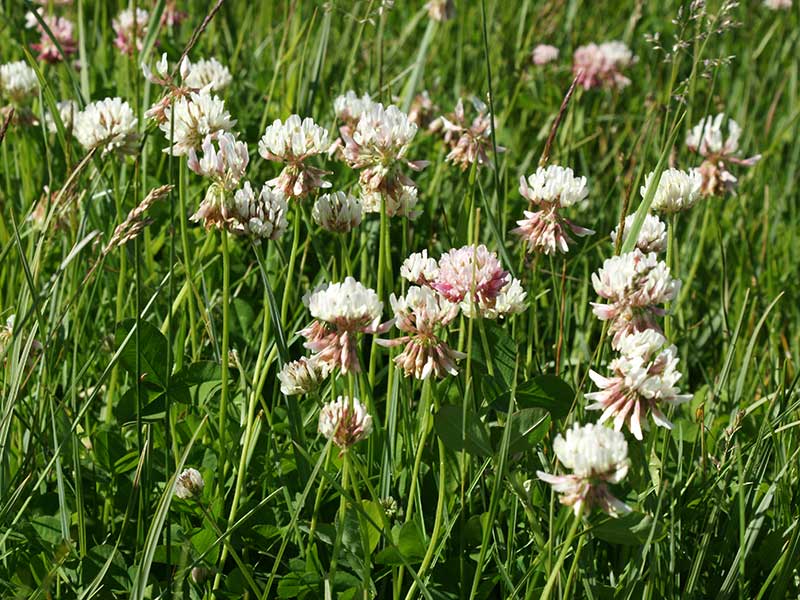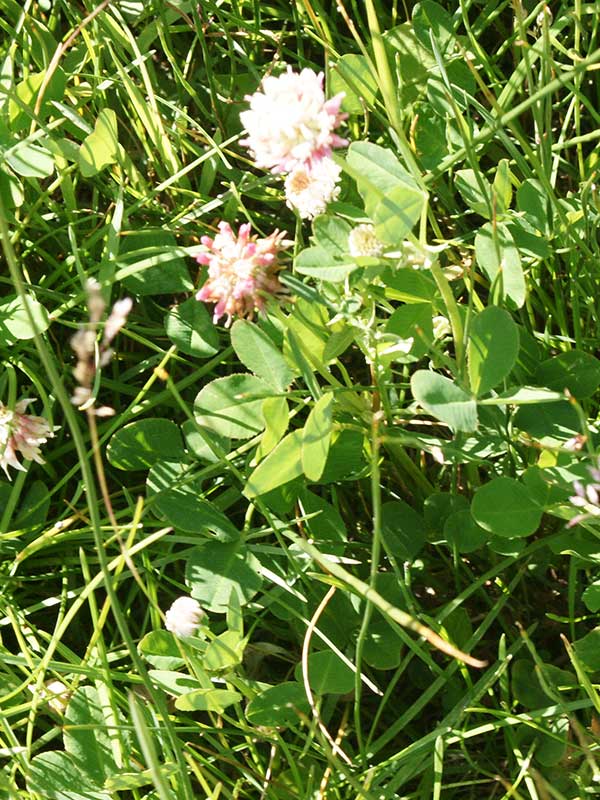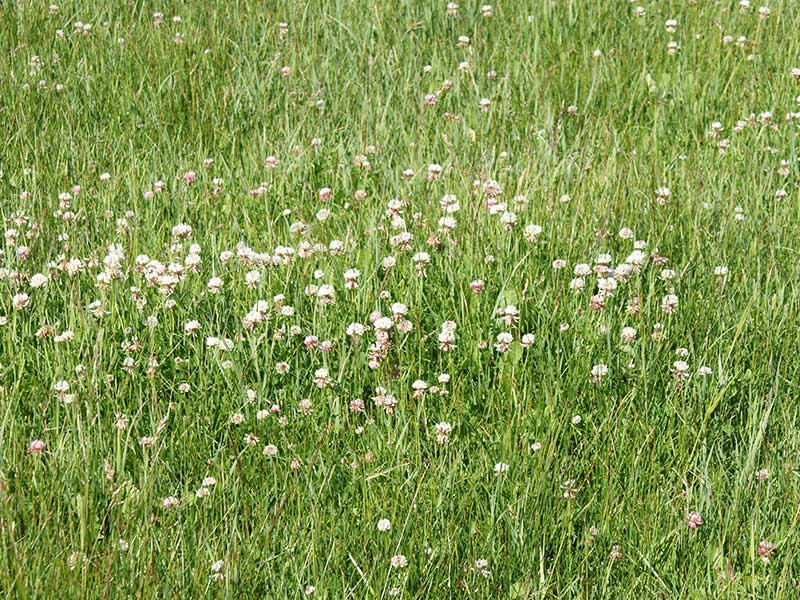Trifolium repens / white clover
- the quintessential 3-leaf clover
- white flower heads, tinged with pink (perhaps)
- found in full sun with little other specific requirements
- four leaflet leaves bring good luck
Also known as: Dutch clover, ladino clover, ladino
White clover is an introduced forage crop with excellent nutritional qualities. However, both its leaves and flowers are also eaten by grizzly bears, blue grouse and large ungulates. Of course, it is now also common in lawns and other grassy areas as an escapee from crop lands.
More than many other species, the common names of white clover actually mean something. “White clover” is applied to all varieties. “Dutch clover” denotes those of intermediate stature. And ladino designates those that are particularly tall.
White clover is an herbaceous perennial. Its leaves are trifoliate with rounded tips, although occasionally, there are four leaflets rather than three. These, of course, bring good luck and keep children occupied for hours looking for them (at least they kept me occupied for hours). There are usually either light or dark markings in the mid-blade region. The leaves have long petioles and overall height actually reflects their length.
The inflorescence of white clover is a globe-shaped head of whitish flowers, often with a tinge of pink or cream. These other colors may come on with the aging of the flowers. The heads are ½ to ¾ inches in diameter at the ends of peduncles (stems) up to 3 inches long. Each flowerhead has 20-50 flowers. Although the individual flowers are hard to see – we always see the globe instead, and I have never actually taken or seen a photo of one – they do exist. Each flower is narrowly tubular, consisting of a green calyx with 5 narrow teeth and 5 petals. When fully open, each has a small standard/banner and 2 wing petals that enclose the keel. Each flower has its own very short pedicel. The flowers are insect pollinated, especially by bees.
The root system of white clover consists of a tap root that develops in young plants and persists from less than 1 year to 2 years. The majority of the roots, however, are shallow and fibrous. They form at the nodes of the creeping stolons. (repens means creeping). A single plant can spread as much as 18 inches a year, which is fine unless it is in your lawn or garden. At least the stolons are shallow and relatively easy to dig out if you are one of those who cares more about maintaining the monoculture of your lawn rather than the ecological value of mixtures including N-fixers.
White clover thrives in full sun and can be shaded out if the grass cover is dense and tall. However, it will grow in partial shade of aspen woodlands. And it rapidly invades canopy gaps.
White clover is a legume and a nitrogen fixer. It is often planted in pastures along with grasses. This makes it unnecessary to add N fertilizers.
| Color | |
|---|---|
| Family | |
| Blossom size | |
| Inflorescence size | |
| Inflorescence type | |
| When? | |
| Where? |


